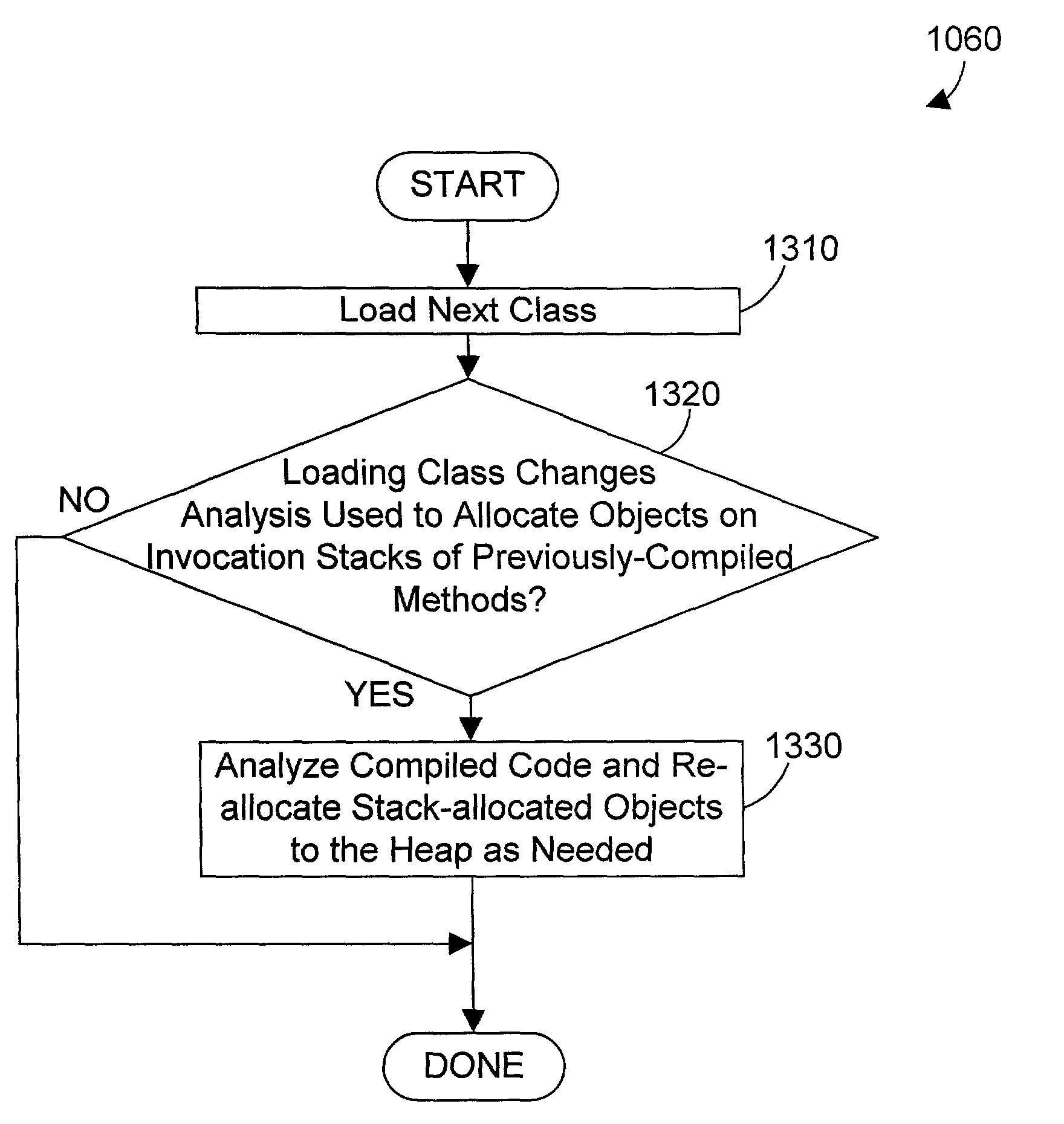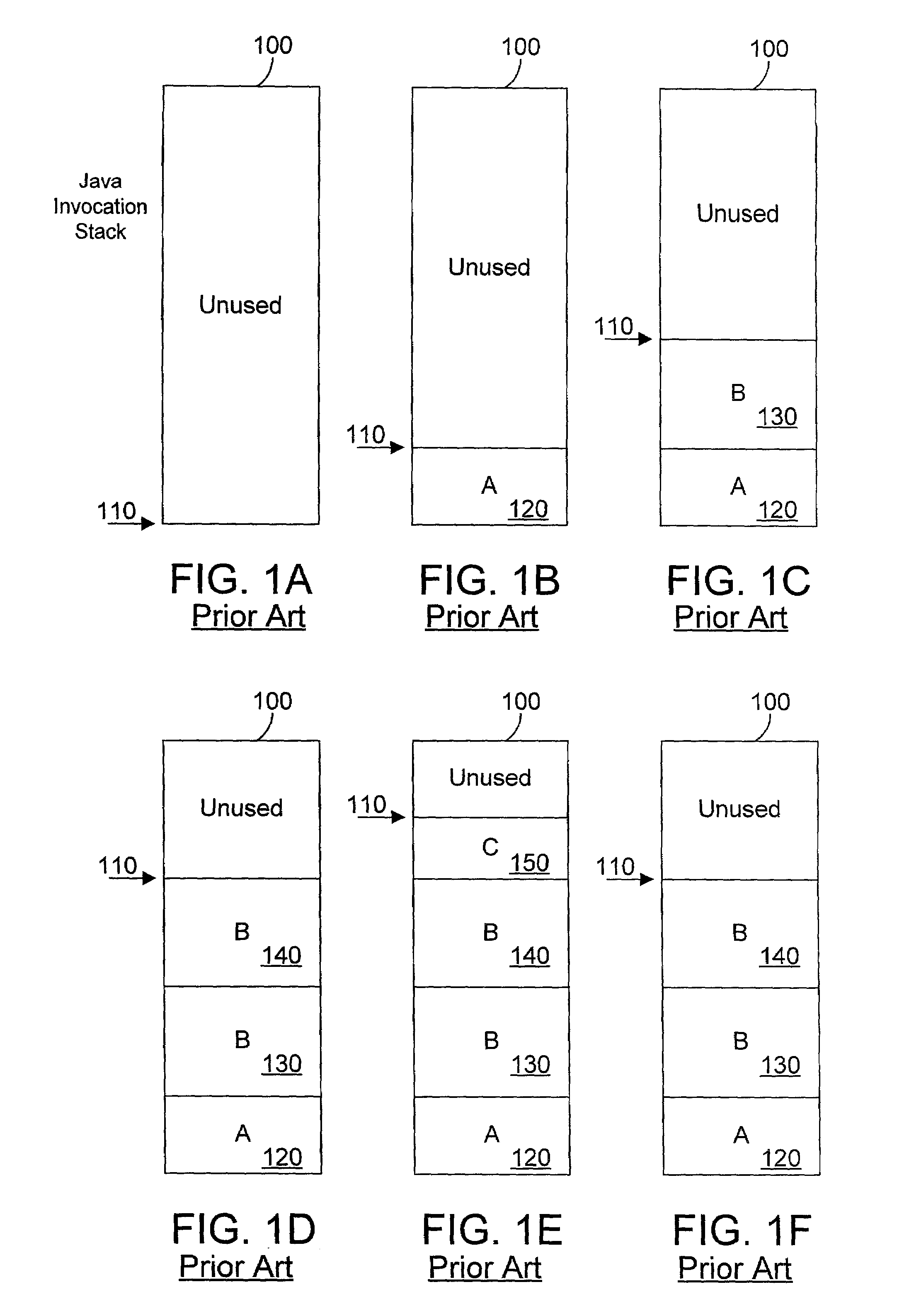Object oriented apparatus and method for allocating objects on an invocation stack in a dynamic compilation environment
a dynamic compilation environment and object oriented technology, applied in the field of data processing, can solve the problems of increasing software development costs, increasing money, and extremely powerful application software programs designed for high-performance computer systems
- Summary
- Abstract
- Description
- Claims
- Application Information
AI Technical Summary
Benefits of technology
Problems solved by technology
Method used
Image
Examples
exampleclass.example
[0120Method( ) is then re-compiled (step 1150). Since there is an allocation site marked for stack allocation, an entry is added to the stack object mapping table for this method, as shown in FIG. 34. Since integers consume four bytes each, the size of the ComplexNumber class instance is eight bytes. The offset in the stack frame is arbitrarily assumed to be 64 bytes. The method's code pointer is then set to the newly compiled code (step 1160), it is marked “compiled” (step 1170), and since there are no other threads to block on the code pointer (step 1180), the steps in method 1050 of FIG. 11 are done.
[0121]The code in ExampleClass.main( ) continues to be executed, with the newly compiled code used for subsequent execution of ExampleClass.exampleMethod( ). Now, consider what happens during each execution of that method. A new ComplexNumber object is constructed on the stack (at offset 64), and then calls are made to doSomeWork( ) and examine( ). Since, in the doubly-nested loop in ...
PUM
 Login to View More
Login to View More Abstract
Description
Claims
Application Information
 Login to View More
Login to View More - R&D
- Intellectual Property
- Life Sciences
- Materials
- Tech Scout
- Unparalleled Data Quality
- Higher Quality Content
- 60% Fewer Hallucinations
Browse by: Latest US Patents, China's latest patents, Technical Efficacy Thesaurus, Application Domain, Technology Topic, Popular Technical Reports.
© 2025 PatSnap. All rights reserved.Legal|Privacy policy|Modern Slavery Act Transparency Statement|Sitemap|About US| Contact US: help@patsnap.com



